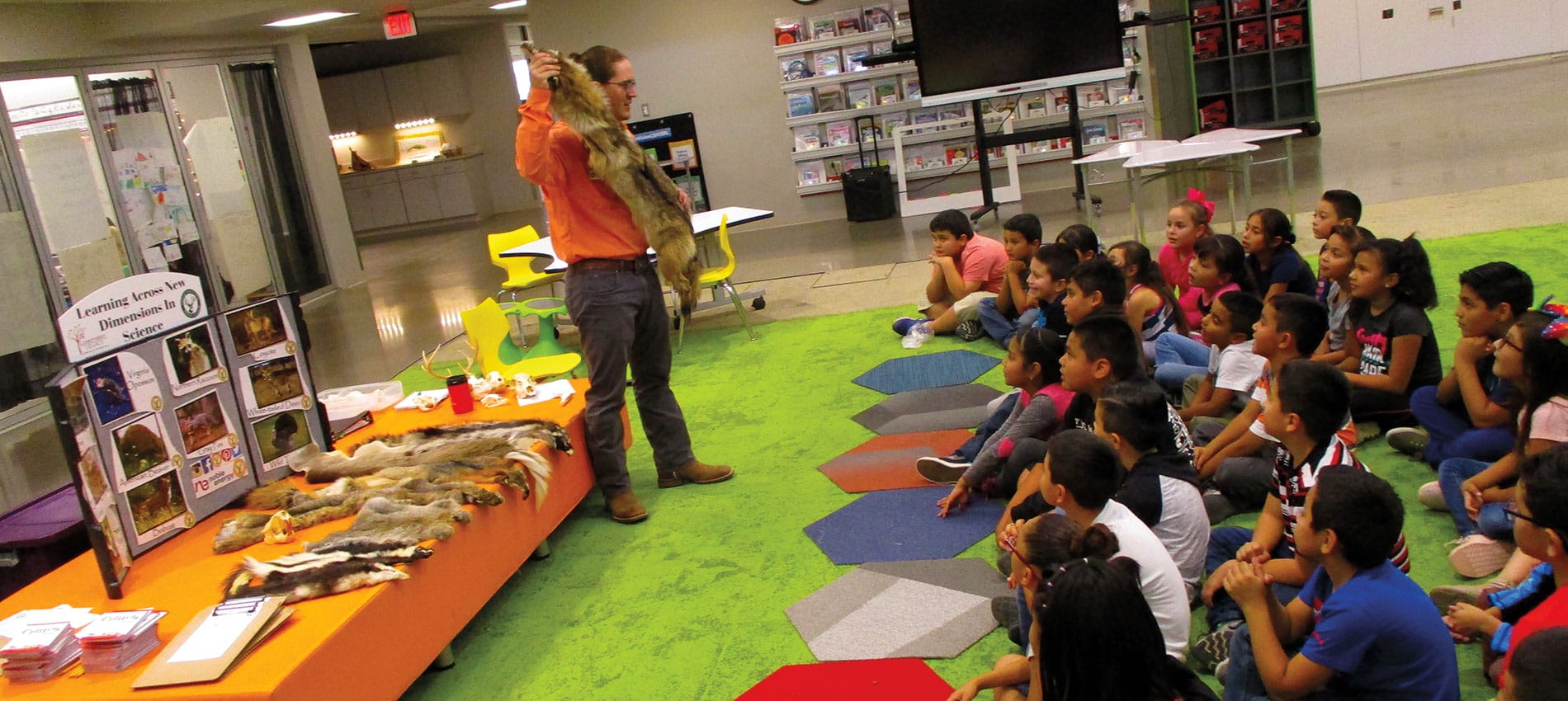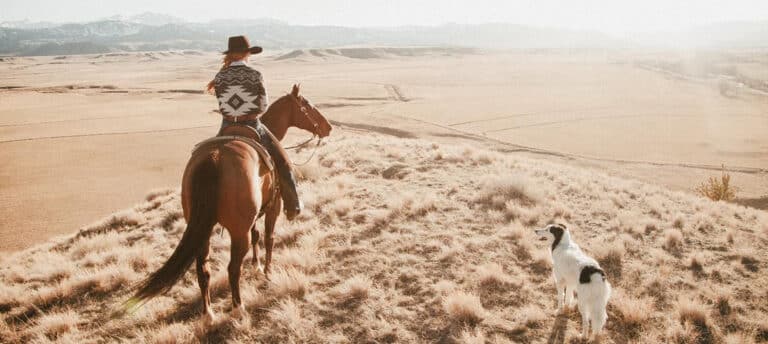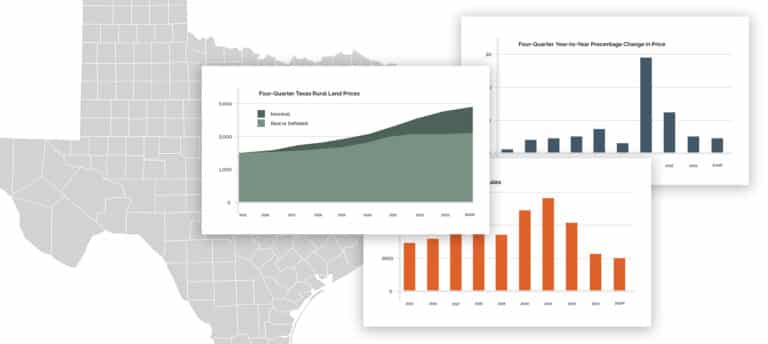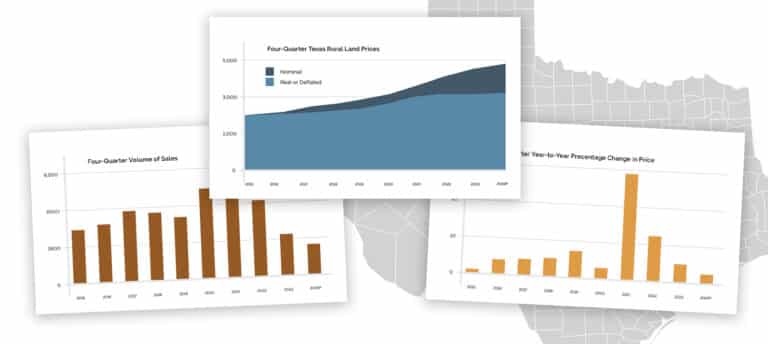All photos compliments of Texas Wildlife Association
With each generation, Texans are farther—and further—removed from nature.
“While nature is around us, it requires us to pay closer attention, think about it on a smaller scale and make an active and concerted effort to see and care for it,” said Kassi Scheffer, Texas Wildlife Association Director of Education – Outreach Programs. “This is the ‘world’ in which many Texans now live and youth are growing up—a world where access to open space and thoughts about stewarding the land are no longer daily default experiences or priorities.”
Conservation Legacy, the education programs of the Texas Wildlife Association, exists to bridge that gap for both youth and adults using classroom and field settings.
While we continue to campaign for Texans to engage with the outdoors, we must also realize that the approaches of (re)connecting Texans to nature is changing, as is the landscape
Kassi Scheffer, Texas Wildlife Association Director of Education – Outreach Programs
While TWA’s education team offers a wide variety of program opportunities, the Wildlife by Design Classroom Presentations are an initial point of contact for many schools and their students.
“The invaluable experience of having a conservation educator in a school begins with a teacher—a teacher who values natural resources conservation enough to incorporate it into their students’ education—inviting us into his or her classroom,” Scheffer said. “Then, we get to take charge of the classroom, removing the teaching pressure from the teacher, igniting a spark for stewardship in the students and leaving at the end of the day knowing we have made their connection to natural resources more tangible than when the day began—we have removed hesitancies and encourage all to learn more!”
Conservation educators using hands-on experiential lessons bring the outdoors into classrooms—both urban and rural—across the state. In 2018, the six educators delivered 570 classroom presentations to 69,243 students.
While it seems that rural students are more likely to be connected to nature than their urban and suburban counterparts, intuition can fail.
L.A.N.D.S. Educator Adrienne Paquette, based in Montgomery, serves the rapidly growing Houston suburbs, while L.A.N.D.S. Educator Phil Salonek, who lives in Midland, serves the vast Trans Pecos region.
Two conservation educators. Two vastly different settings. Two vastly different experiences?
The Commute
Salonek and Paquette bring the outdoors into classrooms throughout their regions. While their ultimate destinations are the same, the commutes are not.
Salonek, whose position is underwritten by Noble Energy, covers schools scattered over more than 37,000 square miles stretching from Andrews, Martin and Howard counties on the north to Terrell, Brewster and Presidio counties on the south. While about one-half of presentations occur in the bustling energy hub of Midland-Odessa, the others take place at small schools in this far-flung expanse.
“I love driving a long way because there is a lot to look at and learn from,” said Salonek, who opts for the backroads over Interstate 20 and makes it a point to stop and experience at least one new thing as part of the drive. “I always try to get more insider knowledge of this region we live in whether it’s by splashing around in Balmorhea, studying a road kill porcupine or watching pronghorns with my binoculars.”
He continued, “There’s a ton of beauty out here that I never noticed as a kid because I didn’t understand how it all fit together. It’s easy to ignore what you don’t understand.”
Paquette, who is responsible for outreach in western Harris and three surrounding counties, finds her peace among the pine trees north of Magnolia. When people ask her if she likes living outside the city, Paquette admits to editing herself to keep from encouraging others to join her.
She, whose position is underwritten by the Houston Livestock Show and Rodeo, generally drives at least an hour to reach her schools. Her commute into town coincides with morning rush hour. Because elementary schools generally let out before 4:00 p.m., she avoids the daily mass exodus.
“I breathe easier when the trees begin to outnumber the buildings,” Paquette said. “There is a distinct line between the Pineywoods and Houston, but the line is moving farther out and the trees are giving way to houses, stores and concrete.”
The shifting ratio of trees to asphalt is a constant reminder of how quickly Texas is changing and putting more distance between people and the natural world.
“I have to make nature relevant to kids who think it exists elsewhere,” Paquette said. “To them, nature is something you have to travel to see. They don’t understand that nature lives alongside us even in the cities.”
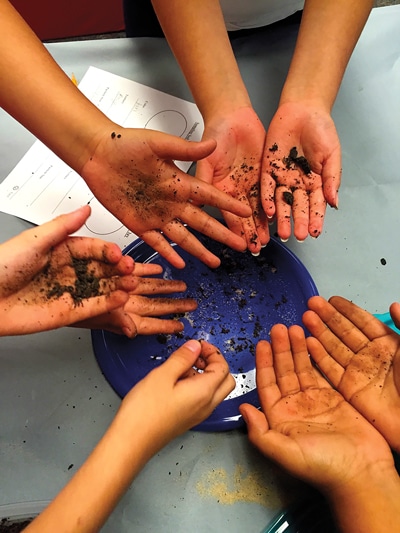
The Schools
In West Texas, Salonek’s clientele attend one of 33 school districts in TEA Region 18, which serves about 90,650 total students spread over more than 37,000 square miles. School size varies. Midland (Midland County ISD) and Odessa (Ector County ISD) have a combined student population of just over 56,000 students while Valentine ISD with 46 students and San Vincente ISD with 19 students represent the opposite end of the spectrum.
As a point of comparison, Katy ISD, one of the nine Harris County districts that Paquette serves, has a current enrollment of 80,817 students. The district has eight high schools, 15 junior highs, 41 elementary schools and five specialty campuses within 181 square miles.
From a financial standpoint, the schools are a patchwork of affluence and need. In West Texas, small districts such as Reagan County ISD and Andrews ISD, located in oil-rich counties, have facilities and programs that would be the envy of many of their larger urban counterparts. Districts that rely primarily on agriculture have much less.
In the suburbs of Houston, although the sources of revenue are different, affluence and need exist side by side. At some wealthy schools, field trips are parent supported and expected. At other schools, a conservation educator on campus is the field trip.
“At some of my schools, the kids get new clothes, new backpacks and new electronics every year and go on great vacations,” Paquette said. “At others, the kids dread summer because when the cafeteria closes they’re going to be hungry.”
She continued, “I’ve given up trying to anticipate who and what I might find. Our job is to reach them and teach them wherever they are.”
The Students
Although the Wildlife by Design presentations are designed for students K-8, the educators most often find themselves in fifth grade classrooms. Fifth graders must prove mastery of science on the State of Texas Assessments of Academic Readiness (STAAR) Test. Part of the genius of Conservation Legacy is that all curriculum and materials are Texas Essential Knowledge and Skills (TEKS) aligned.
“Our lessons involve universal science concepts brought to the Texas level by highlighting our wildlife, our water and our habitats,” Salonek said.
In some classrooms, the children know the purpose of canine teeth in predators while in others they might not be able to identify a coyote with confidence. At some schools, children can identify their local source of water and explain the basics of a water cycle, while at others they think the water “comes from a faucet.”
Salonek said, “The baseline knowledge appears to vary from school to school and classroom to classroom, but honestly it’s hard to gauge. Just because kids don’t say something doesn’t mean they don’t know. The higher the baseline, the deeper we can dive into the good stuff because I’m not building knowledge but expanding on it.”
While there appears, at least anecdotally, to be no connection between socio-economic status and baseline knowledge, the educators both admit to being surprised by their interactions in English as a Second Language (ESL) classrooms.
“Honestly, I imagined that language was going to be a huge stumbling block and was a little nervous to go into a room of ESL kids,” Salonek said.
In far West Texas, Spanish is the dominant language, while in Houston, one of the nation’s most diverse cities, the language can be Chinese, Korean, Vietnamese or a myriad of others. Many of the students are new to America and new to English.
“What I found was students who were academically engaged and well-behaved,” Salonek said. “My ESL classes have been some of my superstars.”
Paquette concurred, “The ESL students, whether it’s because they appreciate the chance for education or want to help their peers understand, seem to be completely in the moment, squeezing the opportunity for everything it’s worth.”
When it comes to the baseline knowledge of pure science, neither rural nor urban and suburban kids have a distinct advantage. Kids are kids.
“Some kids are passionate about animals or the outdoors, even if they’ve only seen it on TV,” Paquette said. “Some kids are just precocious and take everything in. Other kids don’t even realize they care until we get deep into the lesson.”
The biggest difference between urban and rural students is not knowledge, but access to nature and experience in the outdoors.
“Because of where they live, it’s just easier for rural students to brush up against nature,” Salonek said. “They can ride their bikes to the edge of town and play in an open field or see a bobcat on their way to school.”
This first-hand experience makes it easier for rural students to see the connections between nature and their lives than their urban counterparts.
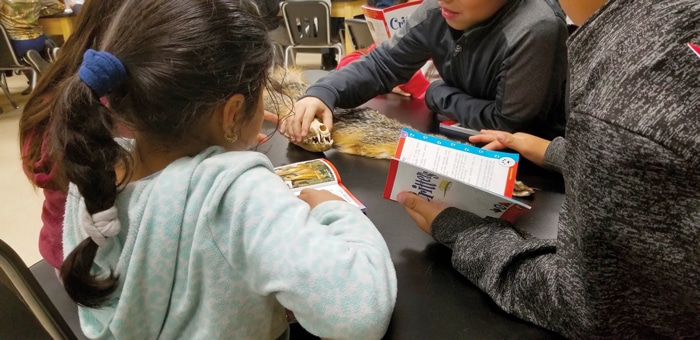
“In my schools, nature is an abstract concept until we start talking about the wildlife they’ve encountered—birds at a feeder, ants on a sidewalk, squirrels in a park,” Paquette said. “Until then, for many of them, nature is something that exists somewhere else. . . on a mountaintop, in a forest, in the desert on another continent far away from people.”
She continued, “My biggest challenge is making nature relevant in the context of their daily lives.”
While nature is more easily accessible to rural students, Salonek wants to be clear that living in the country doesn’t mean that kids take advantage of it or forgo technology.
“For many families, regardless of where they live, getting outdoors and experiencing nature isn’t a priority, so kids don’t even know what they’re missing,” he said.
The Experience
Elementary school classrooms can be a human popcorn popper of activity, especially when an unfamiliar educator appears—and begins unpacking intriguing materials like animal skulls and skins or boxes of bird feathers, depending on which of the Wildlife by Design presentations the teacher has selected.
“We have access to things that most classroom teachers don’t,” Paquette said. “Every one of our presentations, regardless of the topic, has a ‘wow!’ factor—something that drives the message home.”
The educators, who may have up to 45 kids (or up to two classes) in a presentation, build to the wow. The first step is establishing what the kids know about natural resources in general and in their region specifically.
“This opens the lines of communications and lets me know how to modify the lesson,” Paquette said. “And I’ve found that when kids realize they know more than they think, they get excited about learning more.”
Her biggest regret is that a class period doesn’t allow enough time to hear every child’s story or answer every question.
“It’s so hard for me to have to shut down questions, so we’ll have enough time to get everything done,” Paquette said.
Second, the educators introduce the idea of stewardship.
“Being a steward means being a caretaker,” Salonek said. “When we’re stewards of the land, we’re good to the soil, the water and the air, which means that we’re being good to plants, animals and people.”
Third, the educators highlight the connections between nature and people, and demonstrate that children can play an important role in keeping the environment healthy.
“Most of the time, kids are told what they can’t do or that their contributions don’t matter,” Paquette said. “When they understand that what they do in their neighborhood makes a difference for everything and everybody living there, they’re more likely to do something—and more likely to ask what else they can do.”
Fourth, the educators teach the lesson associated with the topic and tee up the wow moment, which is the hands-on, experiential portion of the class. Depending on the topic, students might be identifying native Texas wildlife using skulls and skins or learning about adaptations by mimicking birds’ beaks with different tools or “playing in the dirt” as part of the soil presentation.
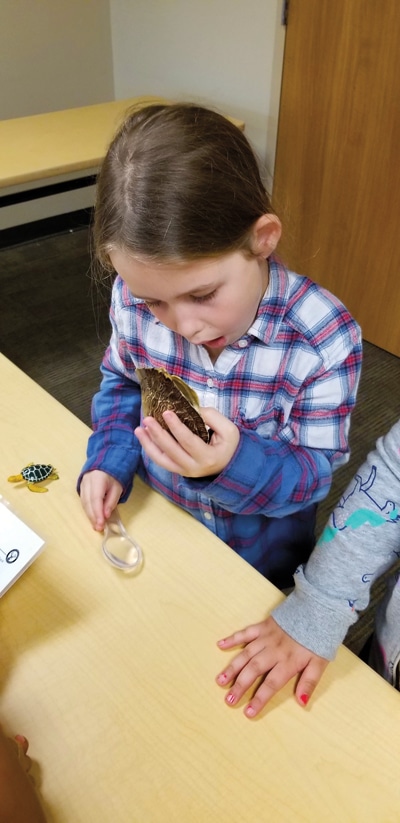
“Hands-on experiences are priceless for kids—they go overboard for being involved,” Paquette said. “Teachers constantly report the students show greater interest and demonstrate greater understanding because they’ve seen, touched and experienced something.”
As the clock begins to tick down, the educators reiterate the take home lessons of stewardship and connectedness.
Salonek ends by telling the students: “This planet we live on is awesome because everything is connected. Nature isn’t somewhere far away, it’s right there on the playground and it’s on your way home. Get out and see it. Get out and take care of it.”
The Results
Conservation educators aren’t motivated by a paycheck, but by the future.
“The phrase, ‘Knowledge is power,’ is true,” Paquette said. “The more children know about nature, the more power they will have in making decisions that are good for plants, animals, water—and the world.”
Day in and day out, conservation educators transfer knowledge to the next generation, never sure when the sparks of information they scatter may kindle a fire in the heart of a student who might change the world.
“When people look back on the work we’re doing through Conservation Legacy, it will be judged in a good way,” Salonek said. “None of us are doing this for the money, but because we want people to understand that we humans are part of the natural world.
“Once we understand that we’re a part of the planet, instead of apart from the planet, we will all be better off. Conservation education is the first big step toward understanding.”
The Journey to the Classroom
A STORY OF TWO CONSERVATION EDUCATORS
Phil Salonek, now 34, was reared in Andrews in West Texas’ Permian Basin, just 30 miles east of New Mexico. During his childhood, the population hovered around 9,000. He grew up playing outside.
“We had Nintendo, but life was so different than it is now,” Salonek said. “I didn’t know any different than to be outside. We were free range kids who were told ‘be home by the time the street lights come on.’”
Activities of choice included riding bikes, shooting pellet guns, fishing on occasion and swimming in the playas when infrequent rains filled them.
Although he grew up outside, Salonek didn’t fully appreciate the elbow afforded him by Mother Nature in West Texas.
“I left as soon as I could,” said Salonek, who joined the Navy and traveled to California.
It was in California, after he finished his stint in the military, that Mother Nature got his full attention on a 200-mile hike through the Sierra Nevadas.
“In the middle of all that grandeur I had an epiphany,” said Salonek, who was attending business school at that time. “I realized there was a world full of people who had no idea such majesty existed.”
After graduating from business school, Salonek moved to Wyoming and formally studied outdoor education at Central Wyoming College. He worked with youth outdoor programs in Wyoming and then spent several seasons as a canoe and snowshoe guide in Maine before accepting a job with TWA and returning to West Texas.
“When I was a kid, there was no conservation education,” Salonek said. “I didn’t know what was out there, either in nature or as a career opportunity. Had I, as a child, had an opportunity to learn about nature, my choices might have been completely different.”
Adrienne Paquette spent her formative years in the Dallas suburb of Plano, where she attended private school and spent her free time riding horses.
“I spent my childhood in the suburbs, but riding horses gave me a touch of rural life,” Paquette said.
Although horseback riding kept her active and outside, she credits her dad and his commitment to YMCA Princesses and Adventure Guides, a program similar to Girl Scouts, for instilling her love of the outdoors. The dad-and-daughter program met regularly through the year for a variety of activities, but for Paquette, the camping trips complete with canoeing, archery and fishing were the highlights.
“Those adventures are some of the best memories of my childhood,” Paquette said.
Although she’d always enjoyed teaching horseback riding informally, she never considered education as a career. She left Plano for Texas A&M intending to become a veterinarian.
“I learned you have to be really, really good at chemistry,” said Paquette, who refocused her interests, earned her undergraduate in Animal Science and eventually enrolled at St. Edward’s University in Austin pursing a Master’s degree in Environmental Management and Sustainability. The degree is jointly conferred by St. Edward’s sister school, Université Catholique de l’Ouest in Angers, France.
As part of her coursework, she and a team of fellow graduate students were tasked with developing a program to save an endangered species. The fate of the Sumatran Tiger rested on her team, who dedicated months to the project.
“We found education to be one of the best ways to save anything,” said Paquette, who completed an internship at the Fossil Rim Wildlife Center in Glen Rose before joining TWA in 2015. “Education sparks curiosity about something—and once people get curious they get engaged and become committed enough to conserve what’s important to them.”
Conservation Legacy
A MYRIAD OF OPPORTUNITIES
Under the umbrella of Conservation Legacy, the Texas Wildlife Association delivers a myriad of education programs for young people and adults. These science-based programs are designed to empower and educate Texans with knowledge of fundamental ecological principles, foster a connection to the land and facilitate natural resource literacy by creating tangible relationships with the outdoors.
Conservation Legacy programs are funded by generous grants and donations to the Texas Wildlife Association Foundation. As a result, the school programs, offered as part of TWA’s L.A.N.D.S. (Learning Across New Dimensions in Science) youth initiative and their attendant resources are available to Texas educators free. All programming delivered to and through schools is science TEKS-aligned to meet the requirements of the Texas Education Agency.
For more information about bringing the various programs, resources and opportunities to your local school, see www.texas-wildlife.org (click on “Program Areas” and “Youth Education”) or contact Kassi Scheffer, Director of Education – Outreach Programs at (210) 826-2904 or by email at kscheffer@texas-wildlife.org.
CLASSROOM EDUCATION OPPORTUNITIES FOR YOUTH
Wildlife by Design Classroom Presentations
Wildlife by Design Classroom Presentations, delivered by TWA educators, are available regionally. The customized, hands-on, TEKS-aligned unit specific educational presentations, are appropriate for students (K–8) and can be completed within a classroom length period with up to 45 students per session.
Educators can choose from five topics:
Birds of a Feather: an overview of the adaptations, characteristics and basic needs of birds.
Investigating Life Cycles: an inquiry-based program that allows students to investigate and compare life cycle models and record their observations.
Skins & Skulls: a prepared discussion of the identification and specialized adaptations of native Texas wildlife with animal skins and skulls.
Stewarding Soil: a series of hands-on activities that will allow students to investigate how soil is formed; the characteristics of sand, silt and clay; how soil health affects living and non-living things; and what products come from soil.
Where Is Our Water?: an interactive program that covers a variety of water-related topics ranging from the water cycle and water usage to pollution and infiltration into our aquifers.
Discovery Trunks
Discovery Trunks, available year-round, statewide and at no cost, are full of Science TEKS-aligned, hands-on, curriculum-enhancing natural resource lessons designed for K–8. Teachers may choose from seven topics and reserve the trunks for two weeks.
Stewarding Texas – A Scientific Exploration
Stewarding Texas is a compilation of 40, Science TEKS-aligned lessons designed to help students (and educators) understand the importance of land stewardship actions. Stewarding Texas is available online (at no cost) and inside every TWA Discovery Trunk.
Youth On-Demand Webinars
Eleven different TEKS-aligned webinars, lasting from 13 minutes to 30 minutes, are available 24/7 at www.texas-wildlife.org.
Youth Videoconferencing
On a regular schedule, TWA hosts real-time, interactive videoconferences featuring experts and in the case of the Animal Encounter series, live animals. The videoconferences can be viewed live via videoconferencing equipment or online. Recordings are also available. Videoconferences are TEKS-aligned and geared for Grades 1–6.
YOUTH FIELD EDUCATION OPPORTUNITIES
L.A.N.D.S. Intensive Program
An intensive year-long TEKS-aligned program created for grades 6–12 creates tangible relationships between the outdoors and essential academic skills. The program includes teacher training, a L.A.N.D.S. Resource notebook and flash drive with a series of lessons, an in-class quail necropsy and a field day experience with natural resource experts on a local ranch.
Trinity River Program
Designed specifically for students, grades 4–12, who live in the Trinity River Basin to promote sound land stewardship and improve the water quality and general health of the Trinity River and its watershed. After a classroom introduction to healthy aquatic ecosystems, students attend a field day in the Trinity River Basin to experience hands-on learning such as riparian assessment and water quality sampling.
